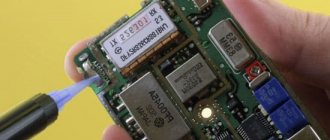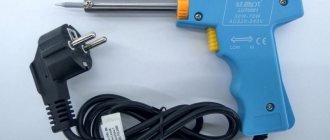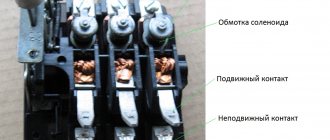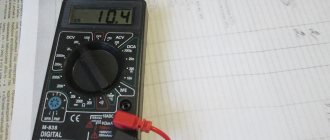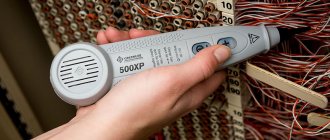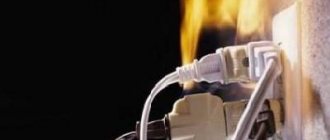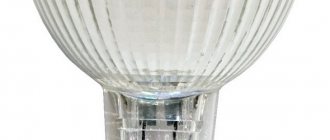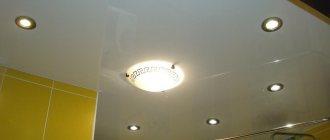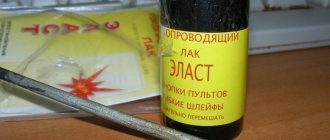Where is glue used?
It has found application in almost all industries due to its properties:
- - low electrical resistance,
- — quick drying (allows you to avoid long pauses in work),
- — elasticity (allows the glue not to spread and makes it possible to apply it pointwise),
- - the ability to connect materials of different structures,
- - good sealing,
- - retains its properties during temperature changes,
- - does not harm human health.
Conductive adhesive is used:
- — repair of computer boards and gadgets,
- - car electrical repairs,
- — gluing heating filaments on car windows,
- - repair of radio devices,
- — installation of heated floors and heating baseboards,
- - fixation of antistatic linoleum,
- - replacement of LED soldering,
- - for soldering elements where it is impossible to use a soldering iron,
- - for “soldering” small elements,
- — connections of dielectrics through which communication will take place,
- — restoration of conductivity in damaged areas of devices (remote control buttons, keyboards),
Important! Conductive glue is safe for humans, however, in case of direct contact with skin, it should be washed thoroughly with detergent and warm water.
Removing glue
It happens that the glue also needs to be removed. At room temperature it is hard and practically impossible to scrape off:
But when heated with hot air at the same 180C, it softens again and is easier to remove with a knife or spatula:
What are the differences?
Let's consider the differences between conductive glue and regular glue, in addition to the presence in its composition of substances with high electrical conductivity.
This:
- - poor resistance to mechanical damage,
- - high price,
- - the need for a metal base.
Depending on the composition, there are different types of glue:
- - silver - its basis is a synthetic resin, to which silver powder is added, while the resin itself is several times less; Mainly used in radio devices;
- – gold – provides the highest electrical conductivity, used if the device is exposed to acid,
- — graphite is the most inexpensive adhesive, used for gluing heated filaments of car windows.
Important! You need to remember about possible incompatibility of materials! For example, if the glue contains silver, then it should not be used for aluminum and nickel joints.
Comparative test for tearing out microUSB connector
I have two burned out lithium charging modules on the TP4056. Both are equipped with microUSB connectors, which will act as test subjects for barbaric loads.
I left one module unchanged, and I reinforced the connector on the second module with red glue on three sides:
The test is quite simple - I use a flat screwdriver to pry it onto the fracture. Stock board:
The connector gave way almost immediately.
Board reinforced with red glue:
This is where I had to tinker a bit :)
Please note that glue was used to strengthen a weak connector, whose middle data contacts were not soldered to the board in any way. And on the other board, which I left unchanged, these contacts are soldered to the board. But as you can see, the connector had to be mutilated even more in order to tear it off. I made holes on the boards because... Previously I planned to mount the boards on a support, but in the end I decided to make do with my hand and a screwdriver.
Total
Works. A useful thing in the household.
Types of glue
Currently, there are many varieties of conductive glue, differing in composition and properties.
Let's look at the most common ones:
Contactol (German brand) - has very high electrical conductivity and perfectly replaces soldering. Can be used to restore very small parts - microcircuits, circuit boards.
Divided into:
- — Contactol on silver is a heat- and moisture-resistant adhesive, used for work carried out on bases made of dielectric material, has increased resistance,
- — Kontaktol Radio – used to form tracks on dielectric materials (made on graphite powder),
- - Kontaktol marker - used for applying tracks to boards and their connections; current conductivity is provided by silver powder.
- ASTRO him - used for repairing heated car windows; current conductivity is provided by silver powder.
- Mechanic MCN DJ 002 – paste paint is used to troubleshoot electronic components.
- Permatex PR 21351 is a conductive two-component adhesive used for gluing glass heating filaments and is resistant to temperature changes.
- TPK-E – used for gluing stainless and aluminum products, does not change properties in the temperature range from -190C to +200C.
- Forbo615 Eurostar LinoEL is a translucent, odorless adhesive used for repair work and has good conductivity.
- Mastix - used for gluing rear windshield heating filaments (contains nickel powder).
How to make conductive homemade glue
A very common method is where graphite plays a major role. You need to buy the cheapest quick-drying glue (“Moment”, “Elephant”, “Second”) or varnish. Carefully unscrew the foil from the back of the tube, do not damage the seal on the lid. Now we need a soft pencil M4 or M2. We take the lead out of the pencil, knead it thoroughly to the consistency of powder and pour it into a tube of glue. Use a long match to mix our composition and twist the foil; be sure to secure it at the bottom with pliers so that the adhesive does not leak out during operation. The main advantage of graphite compounds is that they dry quickly, but are not suitable for non-ferrous metals that have paint on them. The lead is black, the glue will dissolve it and turn grayish - marks will remain on the surface being treated.
Photo - Graphite conductive glue
You can make homemade opaque glue on silver - this requires a little tinkering. First you need to buy silver nitrate or nitric acid . We also need a 1% formaldehyde solution and ammonia (ammonia). We combine silver nitrate with formaldehyde in equal parts and add a few drops of 5% ammonia. If everything is done correctly, a precipitate will appear - black silver powder; it must be removed from the liquid using a filter and distilled water. Next, we dry the substance at a temperature of 105 to 150 degrees Celsius. We still have black powder that needs to be added to the glue. Many craftsmen recommend dissolving a little alcohol in the glue before starting work, rather than using it a little less often. The composition dries very quickly, so stir it periodically.
Another way to obtain the same powder is to evaporate the composition until crystals appear, and then heat them for half an hour at a temperature of up to 400 degrees. As soon as the substance stops bubbling, the base for the conductive glue is ready. In fact, this is a fairly effective composition, but you can make it yourself either if you have the skills to work as a chemist, or if you have a mini-laboratory at home.
Video: review of conductive adhesives Kontaktol
You can make conductive glue yourself
- - take graphite powder (remove graphite from a pencil or salt battery and grind it into powder with sandpaper),
- - mix the resulting powder with clear nail polish or enamel,
- - Mix the contents in the bottle thoroughly.
Making and storing glue in a bottle is convenient, since the tightly closing lid protects the composition from air.
But you need to understand that the quality characteristics of homemade glue are significantly lower than industrial ones, so when repairing expensive devices it is better to use purchased glue.
Appearance
The consumable is supplied in a plastic translucent syringe. Both ends are closed with plugs.
Some brand YM, 30 ml. Storage at 5C. But the fact that it has been overdue for less than 6 years is already alarming! Most likely the first number is the year, and the shelf life of the glue is until July 14, 2022. (thanks to SBVF reader for the comment)
They write here that before use you need to wait for the glue to reach room temperature. Keep tightly closed. Irritating to eyes and skin. In case of contact with skin, wash with plenty of soap and water. In case of contact with eyes, rinse with plenty of water and consult a doctor if irritation persists. All users are responsible.
Tube weight 55.41 grams
You can screw a needle onto the output nozzle - I already had one in stock. You can precisely dose the glue.
Although this is convenient, there is a drawback - on the other hand, the glue leaks through the piston:
Where to apply
Universal contact adhesive is used in industrial production and everyday life. Possessing increased adhesion, it is used as an elastic connection for materials such as wood, MDF boards, plywood, veneer, cork, and plastic. Contact adhesive is used for joining floor coverings such as linoleum, parquet, as well as metals, glass surfaces and rubber. It is ideal for hobbies, shoe repair, leatherwork and decorative work. The glue is effective when working with polystyrene foam, felt, fabric and canvas. Not for use on material such as sheet vinyl.
A wide range of applications allows you to obtain a strong connection, eliminating unnecessary holes in the product, which will also be resistant to external factors and corrosion.
Veneer Contact Adhesive
There are several ways to join wood veneer to a base. If you prefer a quick and convenient method that does not require a lot of special equipment, then good results can be achieved using Cement contact adhesive and a few available tools.
Before you begin, prepare a piece of veneer by trimming it to ½ inch on all sides. Following the manufacturer's instructions, apply adhesive to both the veneer and the base. To do this, use a construction brush or spatula. On large surfaces it is more advisable to use contact aerosol glue. This will reduce the time of application of the composition, and the raw material will receive a slightly viscous structure.
Leave the parts for a while, allowing the binder to set. Using wax paper placed between the materials, determine the correct position of the veneer relative to the base. Remove the paper. Glue the surfaces together, moving from the center to the edge of the base. Smooth the surface using a smoothing blade. Run your hand over the surface of the veneer to make sure it is flat and there are no trapped air bubbles between the veneer and the substrate.
Turn the piece upside down on the cutting surface and cut the veneer with a razor knife, using the edges of the base as a guide. Leave the product for sufficient time for the adhesive to fully contact.
Areas of application
It is advisable to use glue when the space for work is limited and it is not possible to use a soldering iron with solder. You cannot do without conductive glue when repairing certain types of microcircuits that fail at elevated temperatures. Contactol is relevant in the following cases:
- repair of equipment (piezoelements are fastened);
- repair of heated rear window of a car and torn traces of printed circuit boards;
- connecting small parts while simultaneously creating a conductor;
- “cold” soldering of elements;
- creation of heating elements in electric underfloor heating systems.
Making your own glue from graphite dust
One of the most accessible and widespread methods is to use graphite dust as a conductor. To prepare conductive glue, you will need only two components - graphite itself and a binder in the form of any quick-drying glue or varnish. It is not difficult to prepare graphite powder; the core of a construction or regular pencil is perfect for this purpose. The lead, using a stationery knife, must be removed and ground into a fine powder.
When using ready-made glue, the lower part of the tube is carefully unfolded and graphite powder can be added to the resulting opening in a one-to-one ratio. The mixture must be mixed well using a toothpick or any other convenient item. After which, the foil of the lower part of the tube is wrapped back and the self-made electrically conductive composition is ready for use for its intended purpose. The advantage of a composition prepared on a graphite basis is the fast drying time.
In addition to a pencil, you can use worn copper-graphite brushes or a carbon rod from a salt battery to prepare graphite powder. You can grind graphite using fine sandpaper or a needle file.
It is also important to remember that when using varnish as a binding element, the reliability of the connection will be lower than when using a ready-made adhesive composition. With the addition of copper powder to the composition, electrical conductivity increases significantly. The scope of application of a self-prepared electrically conductive composition is quite extensive.
For example, universal conductive glue restores the tracks of the remote control board, computer keyboard - wherever it is not possible to use a soldering iron. Often used by car enthusiasts when it is necessary to restore the rear window heating contacts
The scope of application of a self-prepared electrically conductive composition is quite extensive. For example, universal conductive glue restores the tracks of the remote control board, computer keyboard - wherever it is not possible to use a soldering iron. Often used by car enthusiasts when it is necessary to restore the heated rear window contacts.
How to make electrically conductive glue from pencil lead is shown in this video:
https://youtube.com/watch?v=zzAKl73vbU0
Glue for polyethylene - which one is best for home use
To glue polyethylene parts, special adhesive compositions have been developed. Using adhesives for gluing polyethylene has several advantages:
- Does not damage the material;
- Uniform pressure distribution;
- Possibility of connecting different parts;
- Fixation of individual zones can occur instantly.
At the same time, polyethylene and polypropylene are difficult to glue materials; only high-quality film adhesive can achieve reliable fixation at home. You need to choose the product carefully.
Properties and features of polyethylene
Before gluing polyethylene, you need to understand its features. Polyethylene products provide excellent protection against moisture penetration, electrical protection, and also absorb radioactive exposure. They exhibit the highest resistance to chemical components, for this reason gluing polyethylene is a complex process.
The gluing process involves not only chemical reactions, but also the attraction of substances to each other due to the difference in their charges. How can we glue polyethylene together when it has similar properties? Chemists have been able to find means that help produce this effect. Adhesive for polyethylene film, canisters, and plastic pipes has special properties that allow the material to be bonded.
